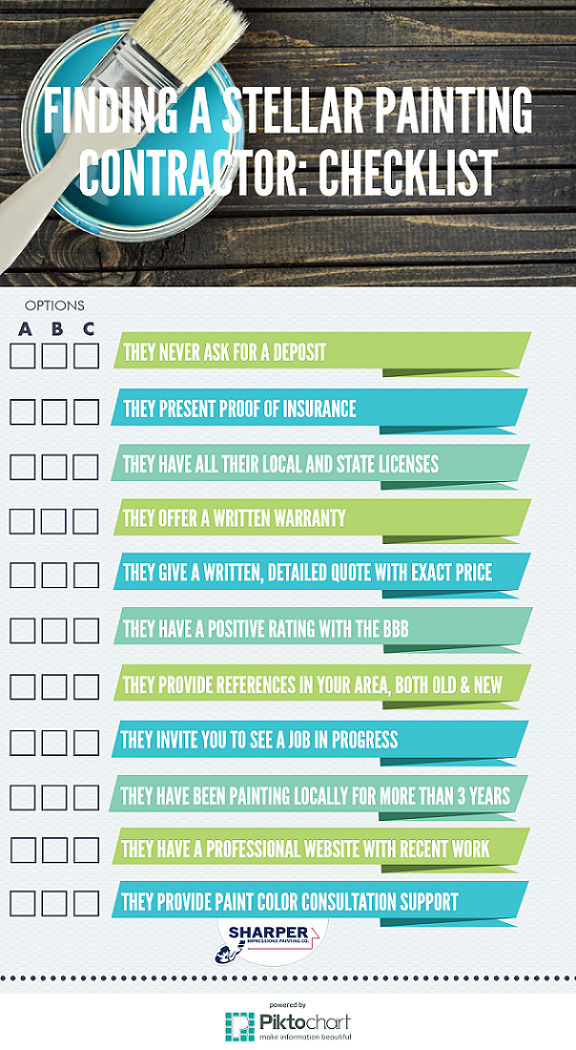Outfit Your Wall Surfaces For Paint Utilizing Vital Suggestions And Strategies That Promise A Beautiful Finish-- Uncover The Main Actions To Improve Your Project
Outfit Your Wall Surfaces For Paint Utilizing Vital Suggestions And Strategies That Promise A Beautiful Finish-- Uncover The Main Actions To Improve Your Project
Blog Article
Read Home Page -Bergmann Balslev
When you're prepping your wall surfaces for painting, it's vital to comply with a systematic process to ensure a perfect finish. Beginning by examining the wall for any damages; this action can make or damage your project. When you have actually determined any problems, cleansing the surface area properly is essential, as a filthy wall surface can impact paint bond. After that, you'll need to patch any kind of blemishes and use a guide. Yet there are specific strategies and ideas that can raise your prep work game-- allow's check out those further to accomplish the very best results.
Assessing Wall Condition
Before you order your paintbrush, take a moment to examine your wall surfaces' condition. Look for any noticeable damage like fractures, holes, or peeling off paint. These flaws can influence exactly how the paint sticks and looks as soon as it's dry. If you see any considerable damage, you'll require to focus on repair work before diving right into paint.
Look closely at the appearance of your walls. Is the surface area smooth, or exists appearance that might call for unique consideration? Smooth wall surfaces usually need much less prep, while textured surface areas may need even more time to repaint equally.
Also, think about the previous paint work. If the old paint is shiny, it mightn't permit brand-new paint to stick correctly. You'll want to know if your wall surfaces have been repainted with oil-based or water-based paint, as this can affect your selection of primer or paint.
Ultimately, remember of any dampness concerns. If you see indications of water damage or mold and mildew, address these issues quickly to avoid more difficulties.
Cleaning up the Surface area
As soon as you've assessed the condition of your wall surfaces, the next action is cleansing the surface area. Begin by gathering your supplies: a container, cozy water, a mild detergent, a sponge or towel, and a scrub brush for harder spots.
Begin at the top corner of the wall and work your method down. Mix the cleaning agent with warm water in your pail, then dip the sponge or fabric right into the option. Wring it out to avoid excessive moisture on the walls.
As you clean up, pay very close attention to locations that could've accumulated dirt, grease, or finger prints. For stubborn spots, use the scrub brush gently to stay clear of damaging the paint below. Rinse your sponge or fabric frequently in tidy water to avoid spreading dust around.
After cleansing, it's important to clean the walls with a wet cloth to eliminate any kind of soap residue. This step makes sure a smooth surface for the new paint to abide by.
Allow the wall surfaces to dry totally before moving on to the next prep work actions. This extensive cleansing process will assist create a fresh canvas for your paint job, making sure the very best outcomes.
Patching and Priming
Patching and priming are critical action in preparing your walls for a fresh coat of paint. Initially, check your wall surfaces for any kind of openings, cracks, or flaws. Make use of a high-quality spackling substance or patching paste to fill these locations.
Apply the substance with a putty knife, smoothing it out so it's flush with the surrounding surface area. Allow it to dry completely, and after that sand it gently till it's smooth and also.
As soon as you have actually covered everything, it's time to prime. Guide assists seal the patched locations, guaranteeing the paint sticks correctly and gives an uniform coating. Select a primer ideal for your wall surface type and the paint you'll be making use of.
Use the primer making use of a roller for bigger areas and a brush for edges and edges. If your covered areas are substantially huge or porous, you may wish to use a second layer of guide after the very first one dries.
After priming, let whatever dry thoroughly before proceeding to painting. This prep work won't only boost the look of your wall surfaces yet also lengthen the life of your paint work.
Take your time, and you'll be pleased with the results.
please click the following website
By following these easy steps, you can achieve a smooth and specialist surface on your wall surfaces. Begin by evaluating their problem, after that clean and spot any type of flaws prior to using primer. Bear in mind to allow ample drying out time and make sure everything is smooth prior to you dive into paint. With the right preparation, you'll establish the stage for an attractive improvement in your space. Currently, collect your supplies, inhale the fresh air, and prepare to paint!
